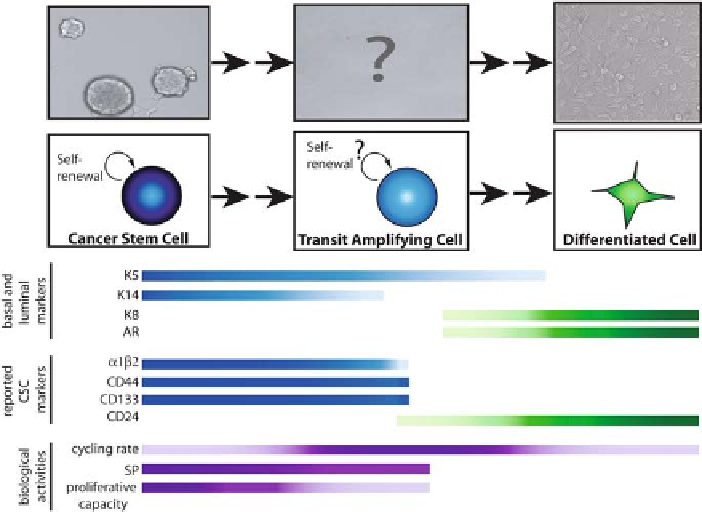Biomedical Engineering Reference
In-Depth Information
aspects of the cells while the third approach is to identify the CSCs by surface
markers. All of these approaches rely heavily on principles first determined in
both embryonic and hematopoietic SCs. An overview of the characteristics of
CSCs, TAs, and differentiated cells discussed below is provided in Fig. 2.
Fig. 2 A model depicting the hierarchical organization of prostate cancer stem cells, transit-
amplifying cells, and differentiated cells. Cell markers and biological properties used to
identify various populations are shown, where a darker color indicates a higher expression/
function and a lighter color represents the loss of expression/function. The pictures shown
across the top show the morphology of the cells grown in culture
3.1 Side Populations as a Means of Stem Cell Enrichment
The first approach has been to measure efflux of the Hoechst 33342 fluorescent
dye, a substrate for ATP-binding cassette (ABC) transporters, out of the cells.
Based on the observations that hematopoietic stem cells overexpress the ABC
transporter, ABCG2 (Kim et al. 2002), and that expression of this drug trans-
porter inhibits differentiation of stem cells (Zhou et al. 2001), it was hypothe-
sized that the CSC should have higher expression of drug transporters, namely
those responsible for multi-drug resistance. There is convincing evidence link-
ing the ABCG2 phenotype to the SP population, since bone marrow cells of
abcg2-/- mice lack a SP (Zhou et al. 2002). The isolation of cells based on their

